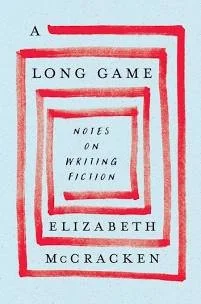REVIEW: When it Comes to War, Never Say Never
/War: How Conflict Shaped Us by Margaret MacMillan
Random House 336 pp.
By Jim Swearingen
A scant 16 years separated the Armistice in what Woodrow Wilson called “the war to end all wars” and the Italian attack on Abyssinia in 1934. It’s doubtful that Wilson would have regarded European aggression against an African nation as disproof of his prophecy, but only two more years would elapse before Germany began invading its European neighbors in the lead-up to World War II.
The catastrophically naïve view that mankind will eventually outgrow the need for slaughter is subjected to a barrage of historical rebuttals in Margaret MacMillan’s new book War: How Conflict Shaped Us. Though she is too prudent to deny that hope entirely, her sweeping analysis of belligerents through the centuries—from the frozen cadaver of a 5300-year-old murder victim to a dizzying list of post-Cold War conflicts—proves that war is too bound up in who we are as a species, and too entwined with our territorial ambitions, economic appetites, and various national prides, to go the way of the dinosaurs — at least not until mankind himself does.
MacMillan has done exhaustive research on armed conflicts throughout history. Her ability to draw connections between motives, tactics, weaponry, and human sensations across centuries is impressive. She illustrates, for example, the causal links among the major European wars. That the seeds of each armed conflict lay within the peace that preceded it contributes to war’s frequency and inevitability.
World War II exploded out of the peace terms ending the First World War, which had its roots in the oft-forgotten Franco-Prussian War of 1870-71, a bit of revenge that had its own genesis in the various Napoleonic Wars. Likewise, the Cold War, which emerged out of the rubble of the Second World War, triggered dozens of proxy conflicts between the superpowers, over subsequent decades. Peace itself can be a volatile state.
MacMillan’s book counsels us to dismiss war’s inevitability at our own peril—its murderous destructiveness, yes, but also its ability to shift large swaths of geography and population in various ideological, political, and religious directions, frequently in favorable ways. As war annihilates, it also unleashes an enormously creative force that has produced the education and training of legions, scientific advances in navigation, metallurgy, nutrition, and medicine, centralization of government organization and taxation, a rise in wages for industrial workers, an increase in civil rights for marginalized populations, and explosions in the fine arts, to name only a few.
MacMillan observes, “The capacity to make war and the evolution of human society are part of the same story.” That very interlacing of war and innovation makes it far subtler than its bloody reputation would suggest. She traces the symbiotic relationship between civilian technologies that lent themselves to new innovations in warfare, which in turn developed mechanisms that later found domestic uses.
The levers the Romans used for pressing grapes and olives, to cite one in a legion of her examples, they converted to catapults that could dash city walls and ship hulls. The system of battlefield triage that distinguished the mortally wounded in the American Civil War from those that might be saved, made its way into civilian hospitals, as did the field of reconstructive surgery, which originated in putting ordnance-shattered bodies back together.
None of her countless examples means that MacMillan endorses this murderous business. She has come to analyze war, not to praise it. Her research is also peppered with examples from anti-war literature and painting, confirming that soldiers everywhere experience horror, comradery, fear, triumph, revulsion and pride in equal measures. A mere change in language and uniform would make many of their experiences indistinguishable, whether from a Roman Centurion in the Egyptian desert or an American Green Beret in the Vietnamese jungle.
In one of his Soliloquies in England, written after the Armistice, George Santayana scoffed at the belief that the latest war would be the last: “Only the dead are safe. Only the dead have seen the end of war.” War is a piece of our tragic history that we are doomed to repeat. Margaret MacMillan warns us that if we are to survive the next catastrophe, we should never say never.
Jim Swearingen is a Minneapolis-based writer whose work has appeared in The National Book Review, The Huffington Post, Salon, and The Minneapolis Star Tribune.










